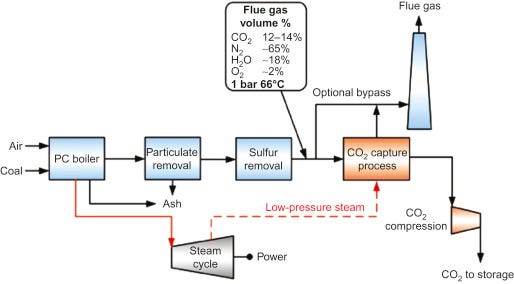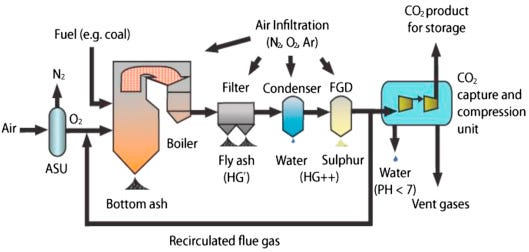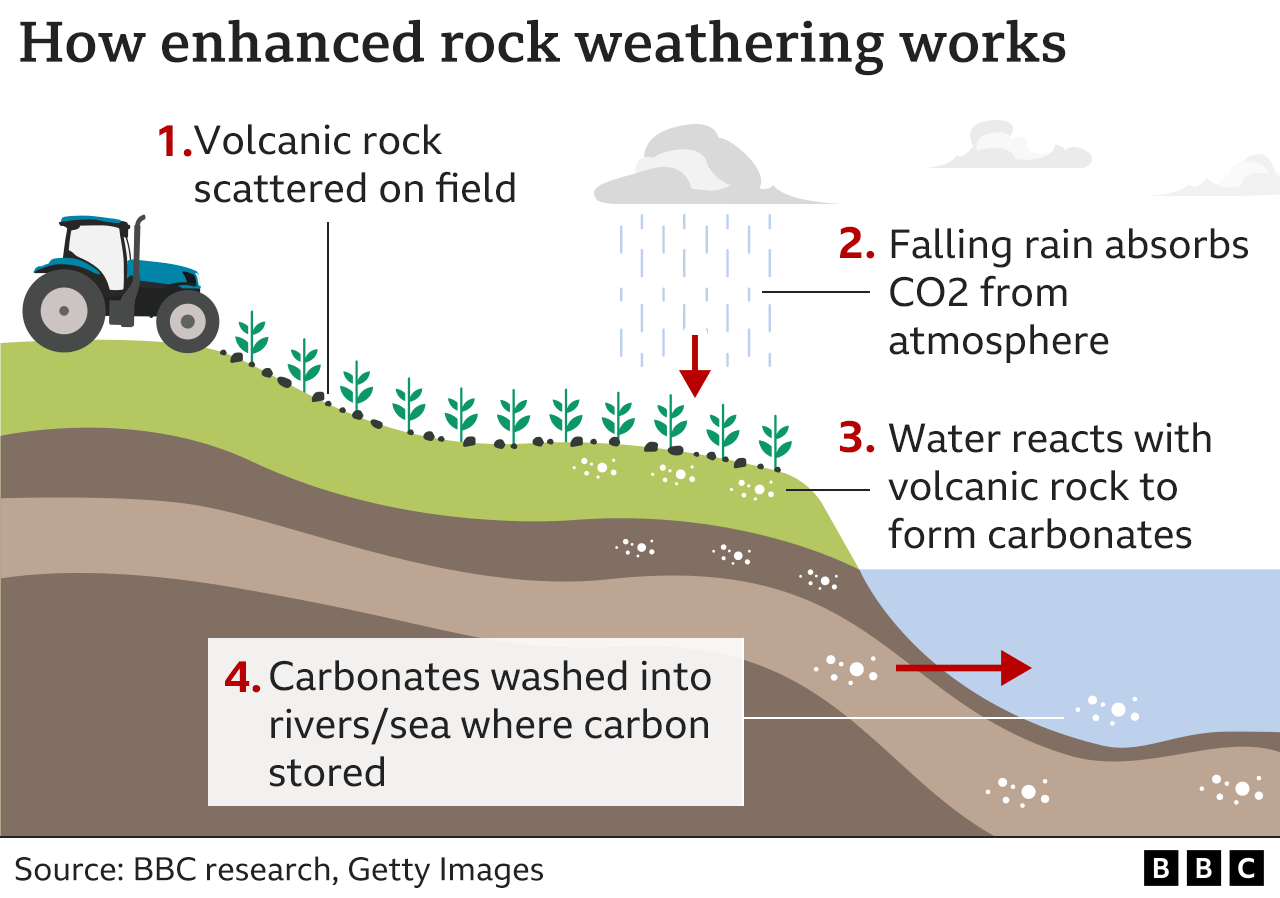Chasing Carbon Ghosts: Why Carbon Capture Can't Cure Climate
Unveiling the hidden costs and limited impact of climate change's expensive techno-fix.
Carbon capture and storage (CCS) technologies are increasingly popular in global efforts to reduce atmospheric GHG concentrations in an attempt to mitigate climate change. They involve capturing carbon dioxide (CO2) and other GHG emissions from sources like power plants and industrial processes, transporting it, and securely storing it underground or utilizing it in various products. This article delves into different carbon capture technologies, their pros and cons, and associated costs, and contextualizes their effectiveness against natural events like volcanic eruptions.
There are different types of carbon capture technologies, each with its own set of advantages and disadvantages.
Pre-Combustion Capture: This involves removing CO2 from fossil fuels before combustion. It's commonly used in natural gas processing or synthesis gas production from coal or biomass.
Advantages: High purity of CO2 makes storage easier; can be integrated into gasification processes.
Disadvantages: High energy requirement; primarily applicable to new plants; scalability.

Above figure shows a simplified scheme of a plant integrated with pre-combustion capture. Both solid and gaseous fuels can be used in the plant and converted to syngas. Gasification is applied to coal while reforming to natural gas. Compared to natural gas, the coal gasification plant will be additionally equipped with a gas cleanup unit to remove contaminants. Source: https://www.sciencedirect.com/topics/engineering/pre-combustion-capture
Post-Combustion Capture: CO2 is removed after fossil fuels are burned, typically using solvents.
Advantages: Can be retrofitted to existing power plants; wide applicability.
Disadvantages: High energy penalty for solvent regeneration; large space requirement for equipment; scalability.

Schematic of a power plant with post-combustion carbon dioxide capture. Source: https://www.sciencedirect.com/topics/engineering/post-combustion-capture
Oxy-Fuel Combustion: Combustion in oxygen instead of air, producing a flue gas that is mainly water vapor and CO2, which is then condensed and captured.
Advantages: Produces a high concentration of CO2; can be retrofitted in some existing plants.
Disadvantages: High costs of oxygen production; potential for nitrogen oxide formation; scalability.

Oxy-fuel combustion system (Natural Resources Canada, 2016). Source: https://www.sciencedirect.com/topics/engineering/oxyfuel-combustion
Direct Air Capture (DAC): Captures CO2 directly from the atmosphere.
Advantages: Can be located anywhere; reduces atmospheric concentrations of CO2.
Disadvantages: Extremely energy-intensive; high operational costs; scalability.

3 basic steps to DAC produce 2 outputs: concentrated CO2 and filtered air. Source: https://www.cbinsights.com/research/direct-air-capture-corporate-carbon-reduction/
Enhanced Weathering (I wrote about this before here)
Advantages: Permanent sequestration, soil improvement, scalability.
Disadvantages: Large land and resource requirements, energy-intensive rock processing, ecological impacts.
The claimed costs of carbon capture technologies vary widely. For example, post-combustion capture can range from $40 to $150 per ton of CO2 captured, depending on the specific technology and plant design. DAC, being more energy-intensive, can cost upwards of $250 per ton. These costs include capital expenditures, operation and maintenance, and the energy penalty associated with capturing and storing CO2.
However, the real costs are significantly higher. To estimate the total investment in CCS (Carbon Capture and Storage) up to 2022 and the cost per ton of CO2 captured, we'll use the available data and make some assumptions.
Keep reading with a 7-day free trial
Subscribe to Irrational Fear to keep reading this post and get 7 days of free access to the full post archives.




